At the beginning of the 18th century, ballet was not yet an independent art form. Dances were often inserted during play intervals to give actors time to change costumes and as a form of entertainment. But they had no plot or connection to the plays. However, this was soon to change, thanks to artists such as John Weaver, Mme Sallé, Hilverding, Angiolini and Noverre, who gave rise to ballet d’action. This article will tell you what ballet d’action is and how these artists contributed to its creation.

Table of Contents
What is ballet d’action?
Ballet d’action was the first type of ballet to dispense with the use of song or words and to rely entirely on dance, gesture, and pantomime set to music. Instead of short divertissements that could vary from one theme to the next, ballet d’action had a more coherent theme or plot.
“A ballet is a picture, or rather a series of pictures connected one with the other by the plot which provides the theme of the ballet ; the stage is, as it were, the canvas on which the composer expresses his ideas; the choice of the music, scenery and costumes are his colours ; the composer is the painter.” Jean Georges Noverre

According to Noverre, “those figure dances which express nothing, which present no story, which have no character, which do not sketch for me a connected and logical plot, which possess nothing dramatic and which fall, as it were, from the skies, are only, in my opinion, as I have remarked already, simple dancing divertissements which merely display the limited movements and mechanical difficulties of the art.
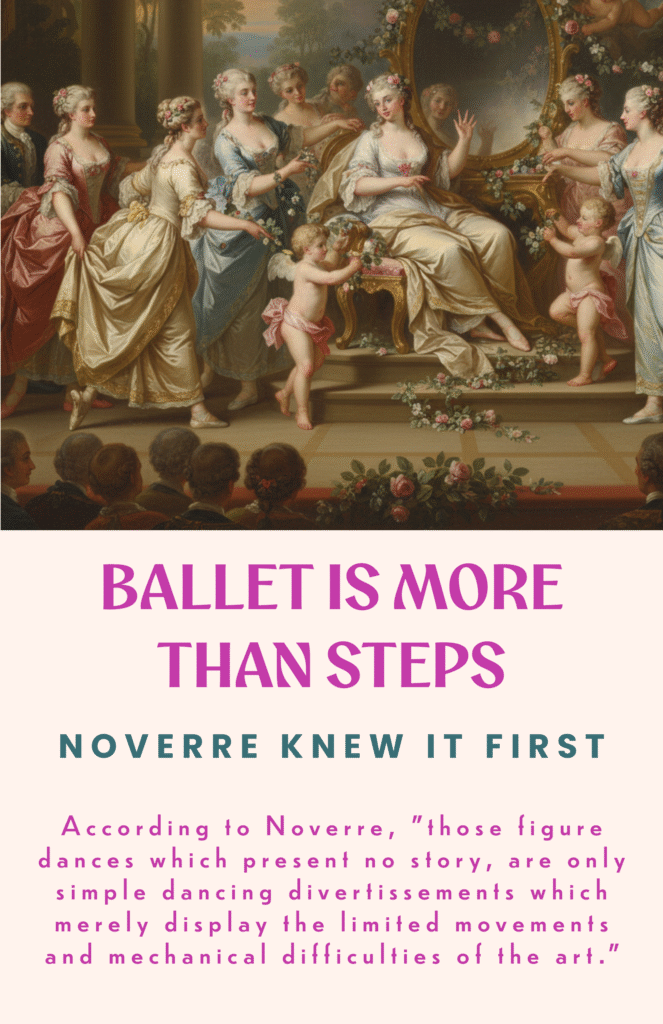
(…) Action, in relation to dancing, is the art of transferring our sentiments and passions to the souls of the spectators by means of the true expression of our movements, gestures and features. So, action is simply pantomime. In the dancer everything must depict, everything must speak ; each gesture, each attitude, each port de bras must possess a different expression.”
Noverre also said ballet teachers needed to know other arts, not just dance. They all form part of a family, enriching each other.
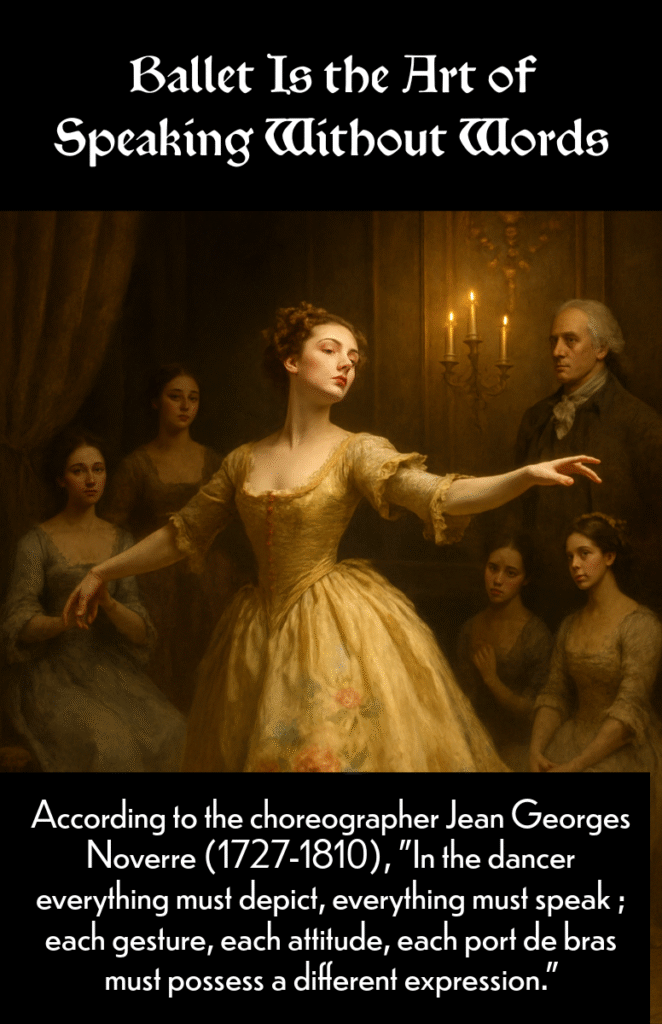
John Weaver, father of English Pantomime
One of the precursors was undoubtedly the Englishman John Weaver (1673-1760), considered the father of English pantomime. He was an outstanding clown and was part of the Drury Lane Theatre as a principal dancer from 1700 to 1736. But Weaver’s greatest importance was in the field of the Grand Pantomime-Ballet. Weaver was one of the first to create a “ballet d’action”. So, he was a predecessor of Hilverding, Angiolini and Noverre.
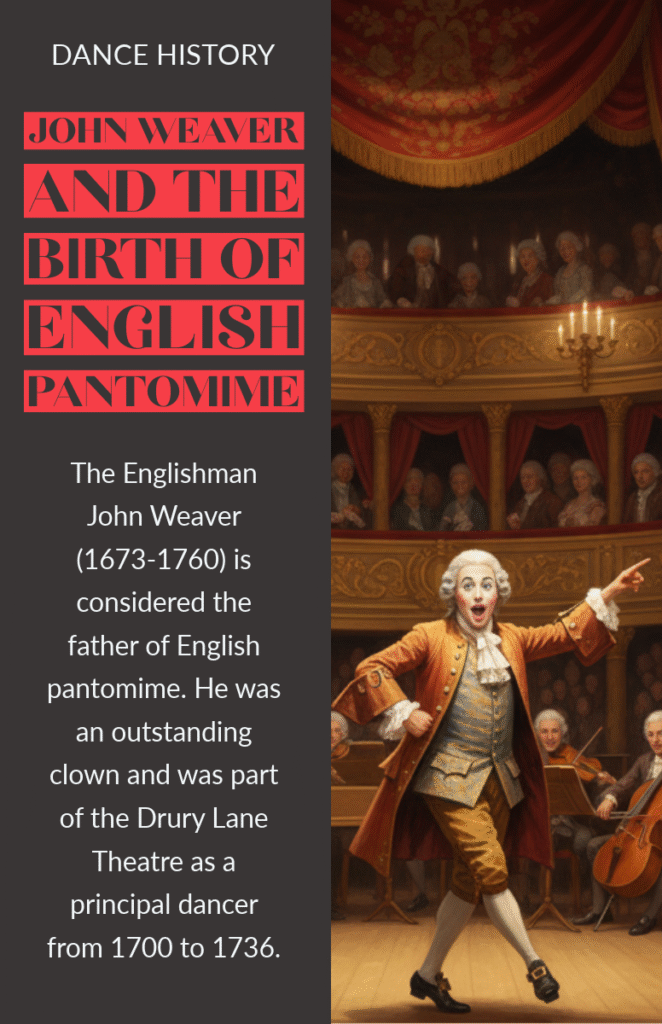
On 2 March 1717, he presented “a new dramatic entertainment of dance, after the manner of the old pantomimes, called The Loves of Mars and Venus”, with Mr. Dupre (who would later become Noverre’s teacher) as Mars and Mrs. Santlow as Venus. This was perhaps the first original English ballet. Weaver was not sure that the audience would understand what the dancers were trying to say. So, he wrote a programme describing the plot, dances, and gestures the dancers would perform.

Marie Sallé, the first dancer-mime
On the other hand, the talented French ballerina Marie Sallé (1707-1756) was engaged to dance in London in 1717. Marie Sallé came from the Théâtre de la Foire (a fairground theatre) in Paris, where she had developed her mime talents and became the first “dancer-mime”. Without a doubt, there would have been little opportunity for her talent to unfold in the rigid atmosphere of Parisian opera. But this finally happened on the stage of her real discoverer in London, the stage director John Rich.
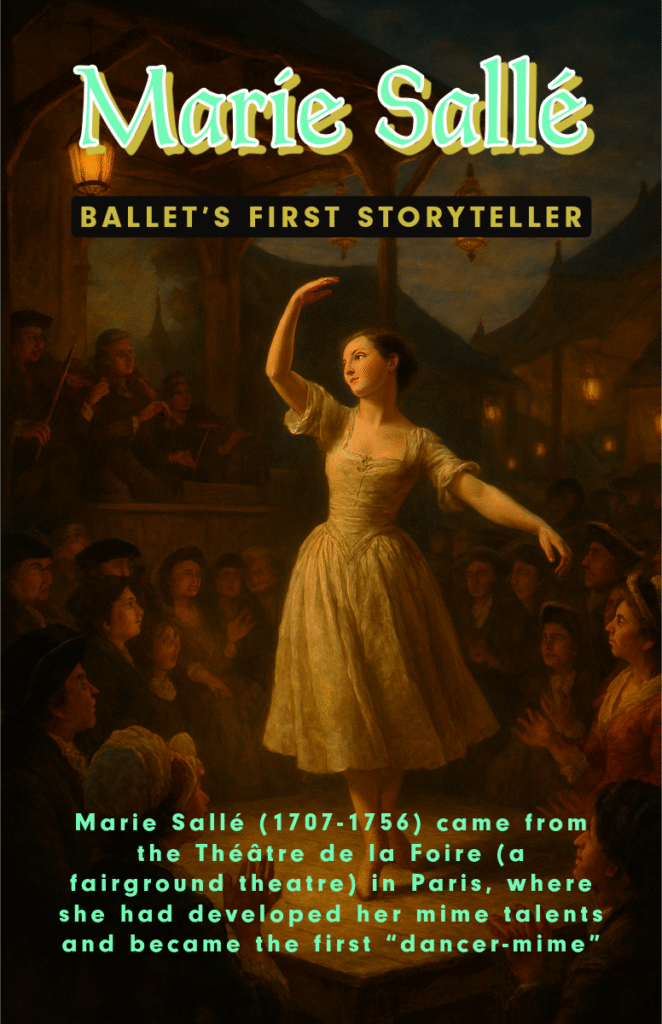
Marie Sallé became a great dancer, noted for her grace and expressiveness. Marie Sallé also performed as a singer at the Paris Opera. So, that activity undoubtedly contributed to the development of her expressive dance. Influenced by Weaver’s work, Sallé found success under Rich’s direction. She choreographed the ballets Pygmalion (14 February 1734) and Bacchus and Ariane (26 March 1734). These works are considered precursors to Noverre’s ballets d’action.

Franz Hilverding: Pioneer of Early Pantomime Ballet
Another of the main creators of the early 18th-century pantomime ballet was Franz Hilverding (1710-1768). Born in Vienna, this master first studied at the Imperial Court Dance School. He then continued his studies in France, which was the capital of dance at the time. He likely saw his first ballets d’action during his stay in Paris. According to dance historians, the first creator of a regular ballet was Hilverding. It was he who taught dancers to play with facial and body gestures expressively. He was also the first person in Europe to re-establish the art of pantomime. This art form was greatly appreciated and perfected by the ancient Greeks and Romans.
On the other hand, the Italian Gasparo Angiolini (1731-1803) was Hilverding’s favourite pupil. He would later go on to develop the ballet d’action. One of his most famous works was Don Juan, premiered in 1761. At Milan’s La Scala from 1779 to 1789, ballet master Gasparo Angiolini refined disjointed court dance with an early form of narrative dance.
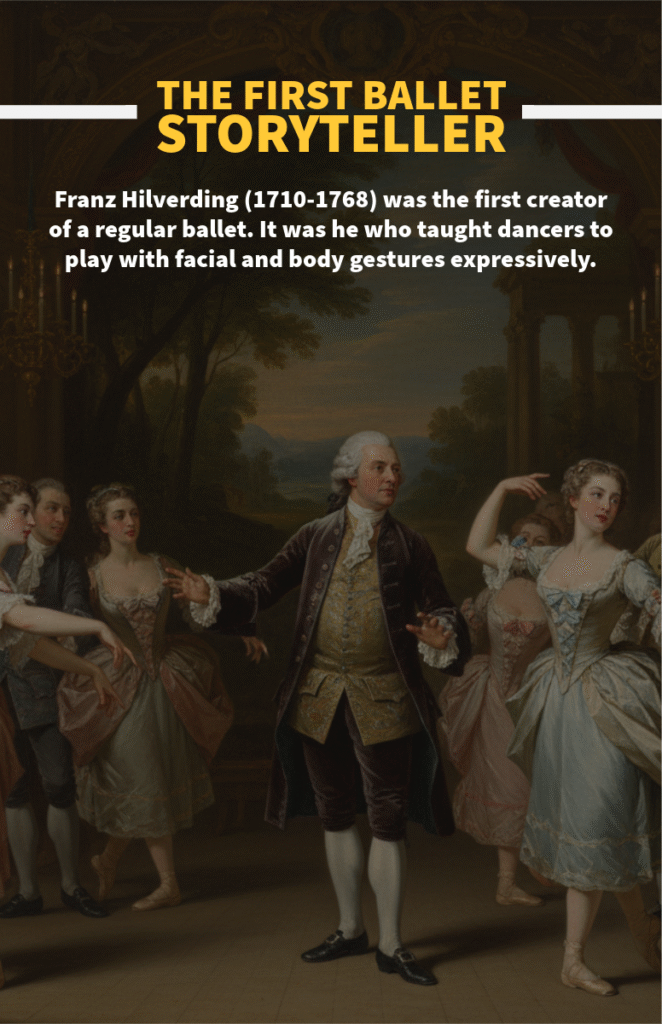
Jean Georges Noverre: The Most Famous Ballet d’action Choreographer
Finally, we have the French choreographer Jean Georges Noverre (1727-1810), maybe the most popular of all these choreographers. However, as we have already seen in this article, his work would not have been possible without the works of his predecessors. Noverre was trained in Paris.
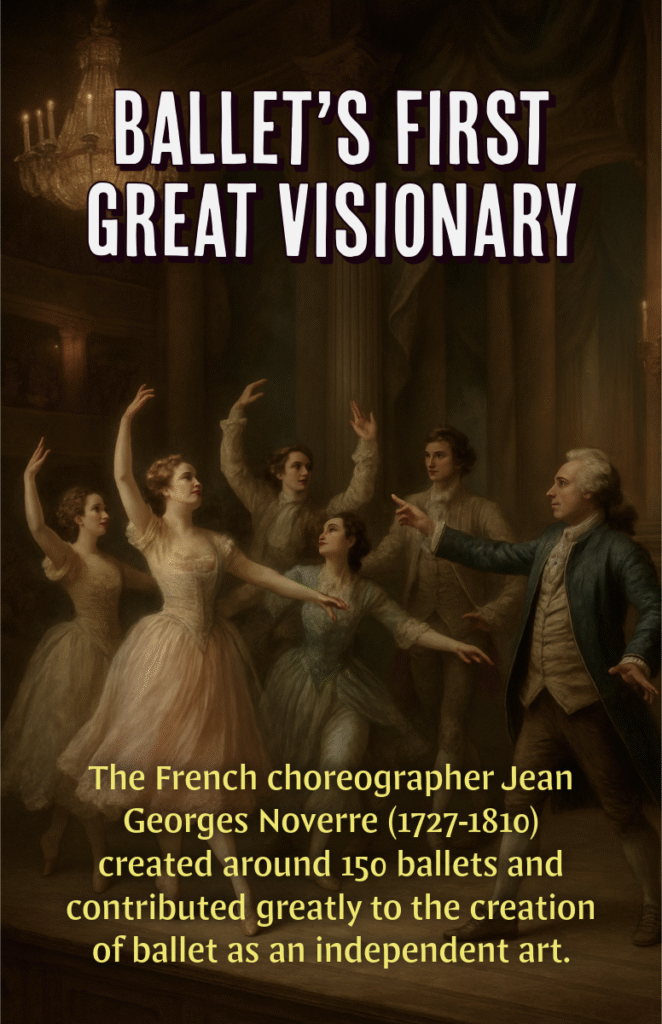
Besides, he was a pupil of Dupré, Sallé, and the talented English actor David Garrick. It could be said that Noverre finished shaping ballet d’action. And much of his thoughts were captured in his book Letters on Dance. However, he was accused by Angiolini of plagiarising Hilverding’s work. Despite this mishap, the book was translated into several languages and its teachings remain valid to this day.
Also, Noverre created around 150 ballets, such as Medée et Jason premiered at Stuttgart in 1763. Most of his ballets were very successful. He was considered a genius by the art critic and writer Denis Diderot. So, Noverre contributed greatly to the creation of ballet as an independent art.
Conclusion
Ballet d’action was the cornerstone upon which ballet as we know it today was built. Ballet would not be an art if we stripped it of expressiveness and feelings. Could you imagine a Giselle without the madness scene? Or a Romeo and Juliet without the Balcony pas de deux? Without the expressiveness of the dancers in conjunction with the music, ballet would only be a set of movements or acrobatics and not an art.



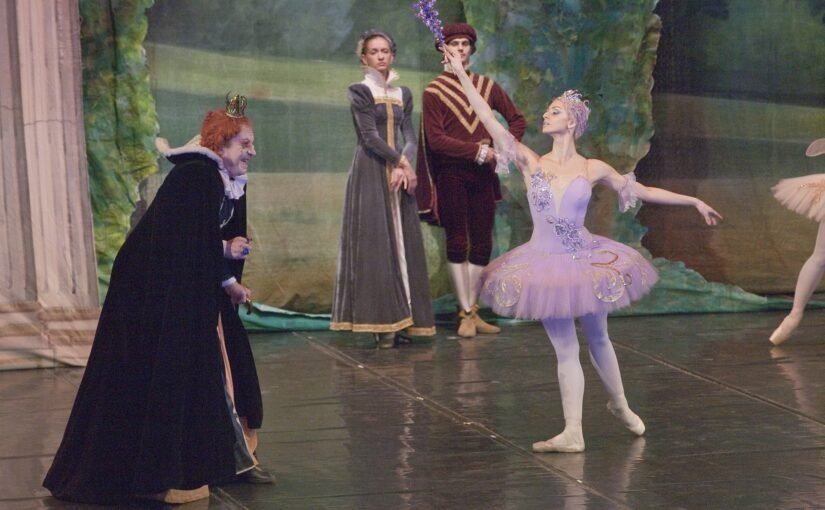
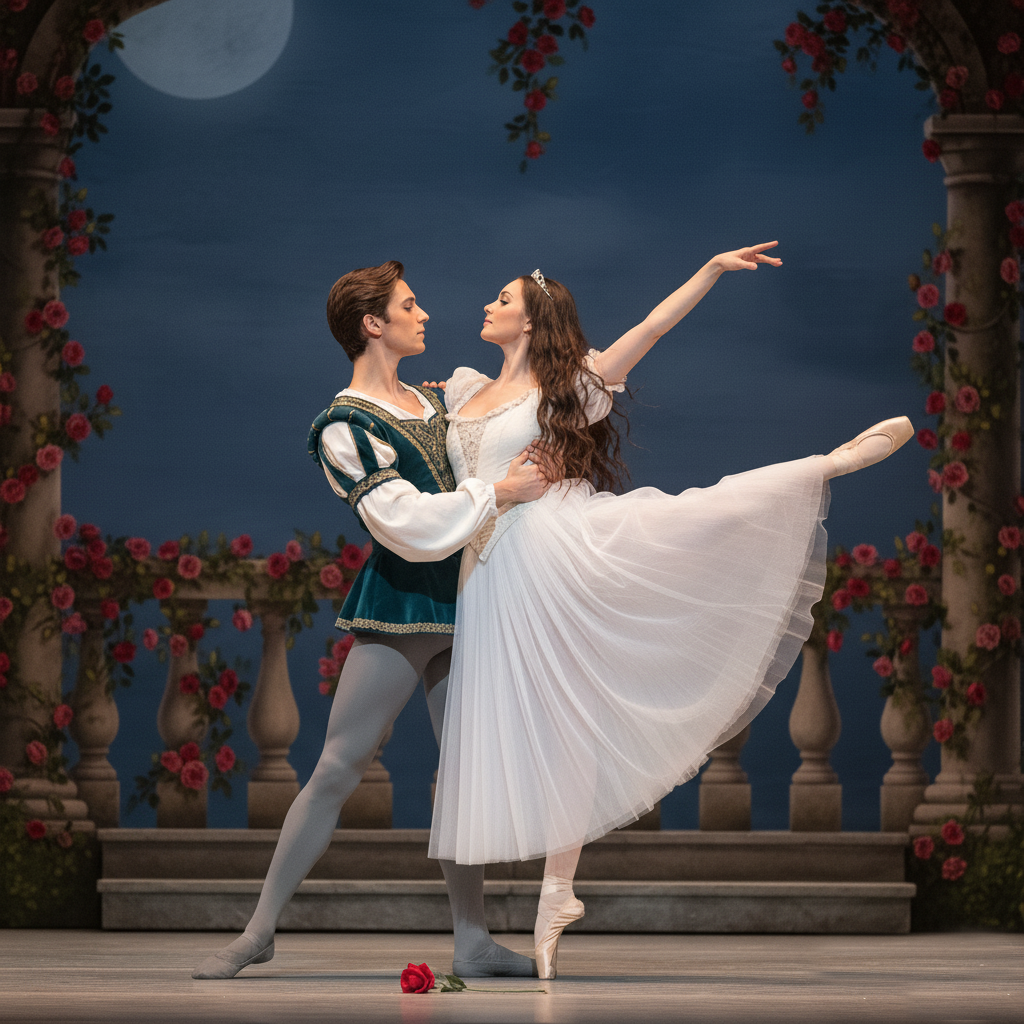
Leave a Reply